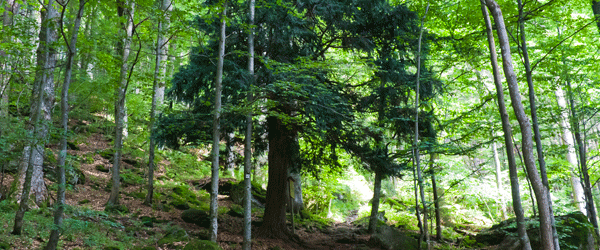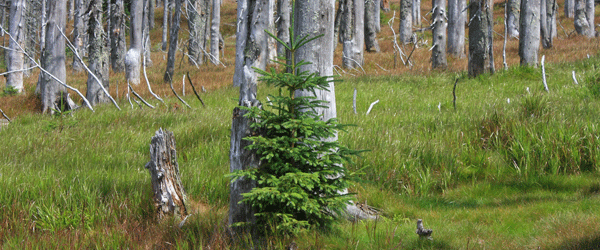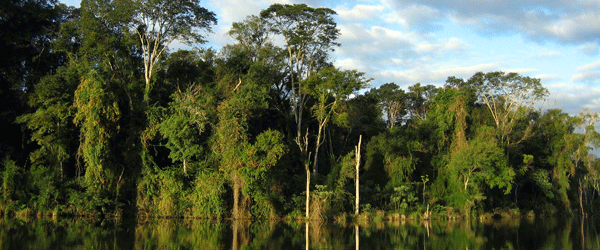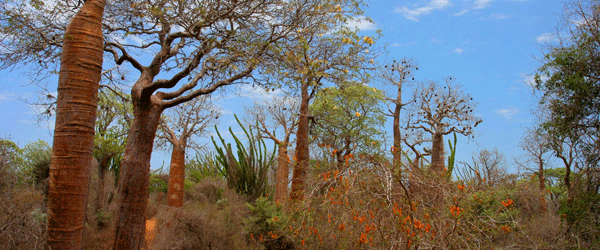Important terms and definitions
Above-ground biomass: It includes all biomass of vegetation, both woody and herbaceous, above the soil, live and dead, including stems, branches, bark, seeds, flowers, and foliage. Measured in units of dry mass or carbon per unit ground area.
Afforestation: The direct human-induced conversion of land that has not been forested for a period of at least 50 years to forested land through planting, seeding and/or the human-induced promotion of natural seed sources (IPCC, 2003).
(See also Reforestation and Deforestation). According to the Kyoto Protocol, it is mandatory to report emission and removals of greenhouse gases from Afforestation (A), Reforestation (R) and Deforestation (D). The IPCC Good Practice Guidance (GPG) defines A and R as “direct human-induced conversion of land to forest from another land use” and D – as “the direct, human-induced conversion of forest to non-forest land”. Assessing A and R requires knowledge of history of the land use. Planted forests are evidently considered as A or R. Spontaneous establishment of forest on abandoned managed land should be considered as A or R if the restored area reaches the thresholds for accounting the land area as forest. Time of A and R should be accounted from this moment of time. In order to be considered A after spontaneous regeneration of trees, an agricultural area should pass from being managed Grassland to being unmanaged Grassland to being managed Forest land. On lands that have never been managed (e.g., shifting tree line in mountains or in ecotones) spontaneous regeneration of trees should not be considered A because this is not human-induced. For the same reason, permanent deforestation due to natural disturbances should not be considered as D. The minimum size of A, R, or D, sufficient for reporting, should be ≥ 0.5 ha to be consistent with the definition of forest.
Biomass: Organic material both aboveground and belowground, and both living and dead, e.g., trees, crops, grasses, roots etc. Tree litter is usually accounted for as a soil component. Biomass includes the pool definition for above- and below- ground biomass. Usually measured in units of mass of dry matter or carbon per unit ground area.
Deforestation: It is the direct human-induced conversion of forested land to non-forested land (IPCC, 2003).
Forest: According to the FAO forest definition, it is land spanning more than 0.5 ha, with trees higher than 5 m of a canopy cover of more than 10%, or trees able to reach these thresholds in situ. Excludes: Areas fulfilling the thresholds specified above but with maximum width of less than 20m (linear formation) and land predominantly under agricultural or urban use, as fruit plantations, agroforestry systems, trees in urban parks and gardens. Includes: temporary unstocked forest land (like un-regenerated cut areas, burnt forests etc.), forest nurseries and seed orchards that constitute an integral part of the forest; forest roads, firebreaks and other small open areas; forest in national parks, nature reserves and other protected areas such as those of specific scientific, historical, cultural or spiritual interest; windbreaks and shelterbelts of trees with an area of more than 0.5 ha and width of more than 20 m; plantations primarily used for forestry purposes, including rubberwood plantations and cork oak stands (FAO, 2000; Tomppo et al., 2010).
The FAO definition of forest is a land use definition and is not directly applicable for remote sensing application because includes temporary unstocked forest land usually presented by burnt areas, un-regenerated clear cuts, barrens, grassy glades, etc. National definitions of forests are substantially different, mostly using minimum relative stocking (or canopy closure) as a proxy threshold ranging from 20 to 60%. Such difference should be taken into account when comparing global or regional products with national forest inventories data.
Growing stock volume: Is the aggregated above-ground volume of all living stems, standing or lying, over a specified land area. Included are over-bark stem volumes – from the base point to and including the stem top – of living stems with a diameter at breast height of more than 0 cm (height of more than 1.30 m). Branches are excluded. Usually measured in cubic meter per unit area (e.g., m3/ha). Change of growing stock is represented by net increment (e.g., m3 /ha/ yr). Some forest inventory manuals request measuring the volume of trees above stumps. Such recommendation is supported by COST Action43 (Tomppo et al. 2010).
Reforestation: Direct human-induced conversion of non-forested land to forested land through planting, seeding and/or the human-induced promotion of natural seed sources, on land that was forested but that has been converted to non-forested land (IPCC, 2003).
Some useful links
- FAO Forestry Section
- European Environmental Agency Forest Section
- SAR-EDU on Biomass
- ESA Future Biomass Mission
- Center for International Forestry Research
- World Resources Insitutute Forest Section
- Forest Stewardship Council
- Programme for the Endorsement of Forest Certification Schemes
- WWF Forest for Live
- Greenpeace Forests Section
- UN REDD Programme
- UN COP 21






